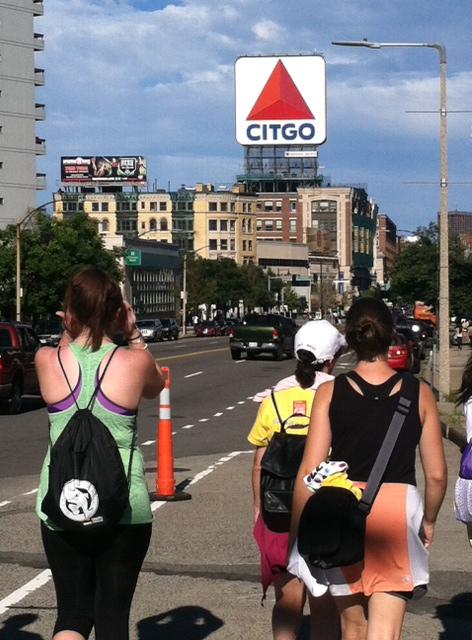{In the prior parts of this series, I talked about selecting a walk & gearing up, training & fundraising, and actually DOING the walk. This last post focuses on the recovery, which was an area where I had difficulty my first year. As with the other posts, when you think about doing a walk like this – make sure you talk to a doctor and maybe someone who does personal training. They can give you far more tips than I can as to what’s appropriate for YOU. I can only comment on my experience and I don’t claim to have any medical training, professional certification, etc.}
Last year, when I finished the walk, I was tired and in massive amounts of pain. When we got back to the house after the Walk, my temperature dropped and I was then coping with pain and something that felt much like the worst chills I’d ever had in my life. The next few days I was sore – intensely sore – but after a week I was back to normal.
This year was COMPLETELY different.
For starters, I had my fuzzy slippers and a zip hoodie sweatshirt waiting for me at the car. I ditched my shoes and socks in the back seat and switched to the slippers, then I put on the hoodie and zipped it up. The whole point of this was to keep my body warm. Sure enough, I had stretched for a bit after the walk was over, but that’s not enough to cool your body down enough to resist the fact that it’s just done SO MUCH WORK for SO LONG. So, the extra heat from the slippers and hoodie kept my body at a stable enough temperature that the transition from Walk to home was an easy one.
When we got home, the kids were waiting eagerly for us and we managed to have dinner in tow (we’d called our local pizza joint on the ride home), so that made life a lot easier. I took some more ibuprofen, since I was starting to stiffen up a bit, and I took a lukewarm shower so I could wash off all the salt and sweat without setting my muscles off. Getting the kids to bed was easier than expected, and we all managed to sleep through the night this time – no nocturnal freak-outs from either child.
The next day, both dh & I pushed fluids and kept the protein going, and we both kept moving. Even when we were a little stiff or sore, the idea was not to just spend the entire day on the couch. Two days after the walk, my quads hurt, but that was to be expected. Typically, it’s not the day after a workout that gets you; it’s the day AFTER the day after a workout that has the peak pain. Even so, somehow, my body was in a better state for this Walk than it had been the year before, and I felt like I could go up and down stairs, walk around and generally be in less pain than I had been in the recovery period last year.
Next year, I think the plan will be much the same – have warm gear to change into at the car before the drive home, push ibuprofen as needed and don’t stop moving for an entire day. While I took a few days off from actual exercising, that doesn’t mean I didn’t get moving again quickly. Within a couple of days, I was doing strolls at lunchtime with co-workers, and I think that definitely helped me recover. I’m still amazed at how well everything went before, during and after the Walk. Honestly, all the planning in the world couldn’t have made it go any better.
And so I can close the book on the 2012 Walk and plan for 2013. Who’s with me?






